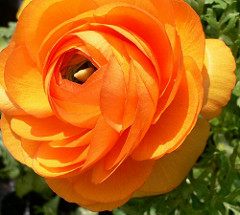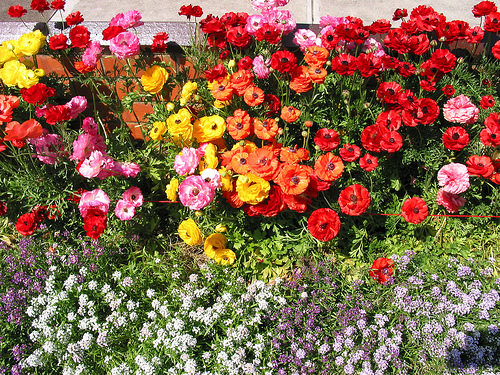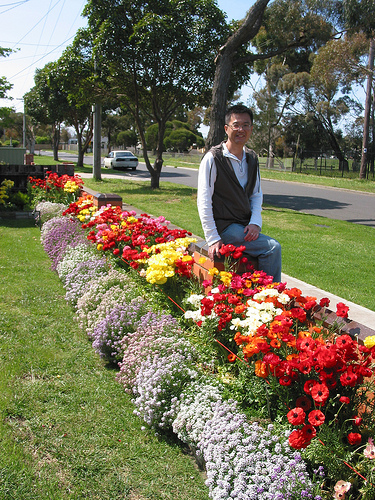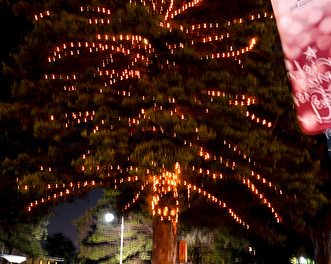I first knew of this beautiful flower called Ranunculus when I visited Gardenworld on Springvale Road – a really cool place with its own cafe! I bought a pot of Tecolote Ranunculus Sunset, after being mesmerized by its brilliant golden-orange colour.

Photo by Luigi
The genus Ranunculus has about 600 species, of which Ranunculus asiaticus (also known as Persian Buttercup) has large, brightly-coloured flowers and is popular as an ornamental garden plant and in floristry. In Spring, the flowers burst with lustrous petals that take on a thin, crepe-like appearance and have vivid colours, varying from red to pink, orange, yellow and white.
The name Ranunculus comes from Late Latin, meaning “little frog”, probably because many species are found near water, like frogs. Ranunculus is known by several local names, each with an interesting story.
This flower is called Coyote’s Eyes by native Sahaptin tribes living along Columbia River in the United States. The name comes from a legend of a coyote popping his eyes from his head and tossing them to heaven for self-amusement. Before he could catch his eyes on their return to Earth, a flying vulture snatched the eyes away. Confused and sightless, the coyote decided to create new eyes from the heads of ranunculus flowers.
One Asian mythology describes a prince with a lovely voice who enjoyed taking long walks in the open country and singing to the nymphs that roamed these regions. He fell madly in love with one such nymph but failed to express his love and eventually died from disappointment. Upon his death, his body began to transform into the shape of small, delicately-petaled flowers which were then given his name.
Ranunculus flowers are frequently given as gifts due to their dazzling appearance. However, they have come to symbolize how much the giver is physically attracted to the recipient and hence, are becoming a favorite flower during weddings and other romantic occasions.
My next door neighbour taught me how to grow Ranunculus. After the flowers have withered, the bulbs should be dug out from the ground, separated (one bulb gives rise to several) and stored in a cool, dry place for replanting in the next growing season. With this method, my neighbour is able to multiply his number of plants each year.
Last year, my neighbour planted the Ranunculus too late so the flowers did not manage to blossom before the weather got too hot. This time round, the conditions (rain and temperature) were perfect, resulting in a stunning spectacle of colours!
Below is a youtube video on Ranunculus.







